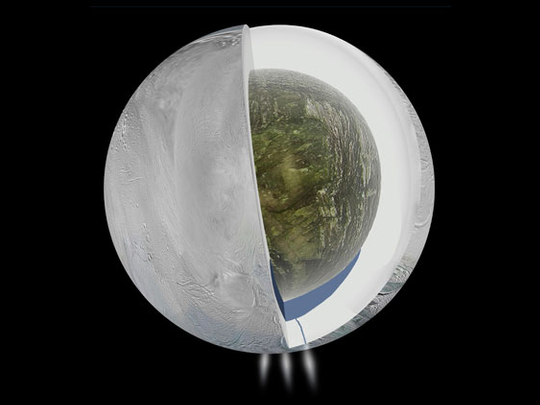
WASHINGTON: An ice-encrusted moon orbiting Saturn appears to have the conditions necessary for life, NASA announced Thursday, unveiling new findings made by its unmanned Cassini spacecraft.
Cassini has detected hydrogen molecules in vapor plumes emanating from cracks in the surface of Enceladus, a small ocean moon coated in a thick layer of ice, the US space agency said.
The plumes have led scientists to infer that hydrothermal chemical reactions between the moon's rocky core and its ocean - located under the ice - are likely occurring on Enceladus.
On Earth, those chemical reactions allow microbes to flourish in hot cracks in Earth's ocean floors - depths sunlight cannot reach - meaning the moon could also nourish life.
The plumes are 98 percent water, scientists said, with traces of molecules including ammonia, carbon dioxide and methane. Hydrogen had previously been "elusive," they said, but its detection shows the moon's life-supporting potential.
"Now, Enceladus is high on the list in the solar system for showing habitable conditions," said Hunter Waite, one of the study's leading researchers.
The new research, which were published Thursday in the journal Science, "indicates there is chemical potential to support microbial systems," he said.
Cassini is on what NASA has described as its "grand finale" as it runs low on fuel, soaring through a 1,500-mile-wide (2,400-kilometer) gap between Saturn and its rings.
Researchers called its latest discovery a "capstone finding for the mission."
"We're pushing the frontiers. We're finding new environments," said James Green, NASA's Planetary Science Division Director.
"We're looking in a way that we never thought possible before for environments in our solar system which may harbor life today."












